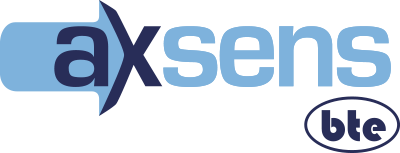Our Mission: Empower your teams to further develop appropriate tools
In a constantly changing world, continuous improvement is more than just a method. It is above all a state of mind.
The implementation of a continuous improvement process is carried out upstream by management. However, it must be extended to all levels, which often requires organizations to be challenged.
Managers must have even greater confidence in their teams, lose the illusion of total control over what is happening; employees must take initiatives without necessarily waiting for orders from the hierarchy. Everyone in their role must become autonomous.
It is a progressive approach based on simple, realistic and inexpensive actions for the company in terms of effort or resources. This more hands-on approach optimizes investment projects that require longer and more costly procedures.

Involvement of managers and executives
For leaders, the priority is to give meaning to action (create a shared vision). First, they must create the conditions (e. g. the right to make mistakes, so as to promote initiatives) for progress to work, provide resources (time and budget), organize training sessions and set achievable mid-term objectives.
For front-line managers, it is highly important to adopt the right posture and to carry out the right management actions on a daily basis, so as to define the rules of proper operation and standards.
For front-line managers, it is highly important to adopt the right posture and to carry out the right management actions on a daily basis, so as to define the rules of proper operation and standards.


Make Lean a key performance driver
Our trainers are trained and certified (Green Belt and Black Belt). They support organizations in the deployment of continuous improvement for growing customers satisfaction.
We propose a complete expertise and we set up a deployment process based on the transfer of expertise through consulting, training, « form’action », coaching or on-site management and animation. This allows to understand the principles of continuous improvement through real-life applications.
Lean Management and Lean Six Sigma :
The Lean Six Sigma methodology (LSS) makes the most of Lean and Six Sigma, which are two methods designed to increase the operational performance of companies.
On the one hand, Lean will focus on eliminating waste throughout the manufacturing process, while Six Sigma will reduce the risk of product variations, which will optimize processes, particularly by reducing waiting and working times.
Deployed in project mode, the Lean Six Sigma methodology follows the 5 steps of DMAIC (Define, Measure, Analyse, Improve, Control) and thus contributes to improve customer satisfaction (in terms of quality, deadlines and costs) and to increase the company’s operational and financial performance (increase profits and reduce costs).
The objective of our experts is to give you all necessary tools for your continuous improvement process using different tools and methods such as process mapping, VSM (Value Stream Map), analysis of added and non-added value (VA-NVA), measurement of lead time, control charts or process aptitude (Cp, Cpk, Pp,Ppk, etc.)


Participative Visual Management:
In an increasingly competitive world, transforming organizations to make them more efficient has become a differentiating factor in performance. As a crucial driver of performance of companies, management must constantly adjust to its environment.
Within the framework of Lean and Agile practices, participatory visual management is based on visual communication and aims at:
- Allowing everyone to see in real time whether the situation is normal or not, in order to take appropriate decisions and correct the situation
- Having a global vision of the project
- Facilitating exchanges
- Involving employees
It is based on simple means: colours, manual displays, panels, photos, etc. and provides a friendly or playful look, that enhances the working atmosphere.
Thanks to their experience, our teams will help you to set up tools to implement quality participatory visual management, such as SQCDP indicators, problem solving by A3s, value flow mapping, versatility grid, work area organization (5S), work schedules (Kanban), continuous improvement table, etc.
“Getting together is a start, staying together is progress, working together is success” Henri FORD



Results…
The company manufactures equipment for hospitals. It is subject to frequent changes by clients, in terms of delivery dates, as a consequence of delays of other service providers. As a result, relationships between commercial, logistics and manufacturing teams are tense. To improve the situation, all operational staff meet daily meeting to follow-up situation thanks to a dashboard document that they created together. Here is the feedback of the quality manager:
“As I am involved in this meeting since its launch, I do confirm that it started very well and it is very useful. All participants are unanimous: they see a real interest in this meeting, which is rather positive. There are also good practices: the meeting starts on time, participants warn if they do not come exceptionally, meetings remain short. And above all, it gives fluidity in relations between sales admin and technical teams, which facilitates the order process. Probably other topics will gradually be added, we’ll see…”
Improvement projects
This 5 days project will allow a team to experience the principles of continuous improvement (Lean). After 1 day of training, the team applies the tools and rules that they learned in ordert to analyze the main dysfunctions and find quick solutions to implement.
Proposals are made to management and directly implemented. At the end of the project, the outcomes are presented to the management.
This is a very efficient way to launch your company’s Lean transformation and to spread its principles.


Problem solving:
It is far more efficient for a company to tackle the root of problems, rather than to act in firefighter mode. The principles and tools of problem solving are well known: sustainable results are resulting from a culture of problem solving. Thanks to a structured approach developed by Axsens bte, based on our collaborative tool ProWhy (link to the site) and developed in partnership with the ENI (Engineering school) of Tarbes, we help you set up a problem-solving approach, in accordance with a continuous improvement approach. This facilitates the exchange and capitalisation of information and the search for root causes, so as to prevent them from recurring.

